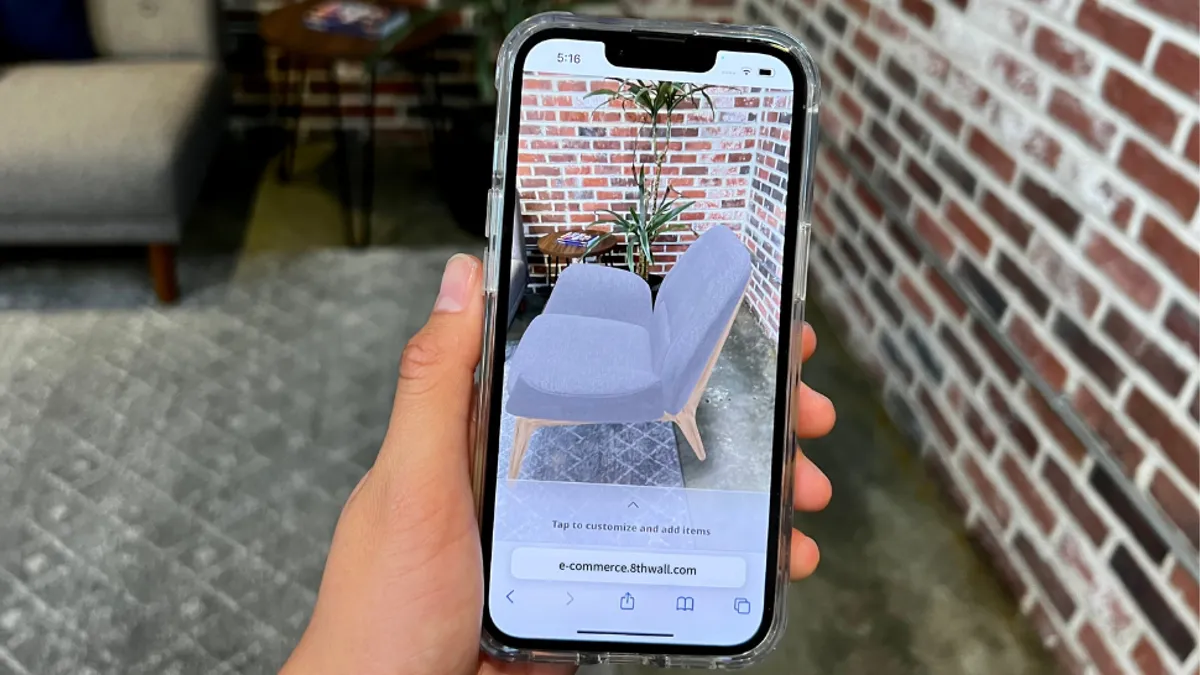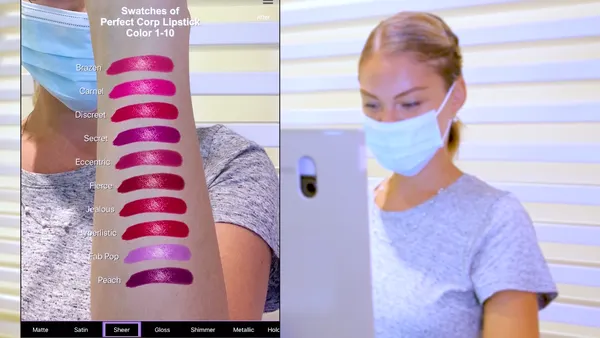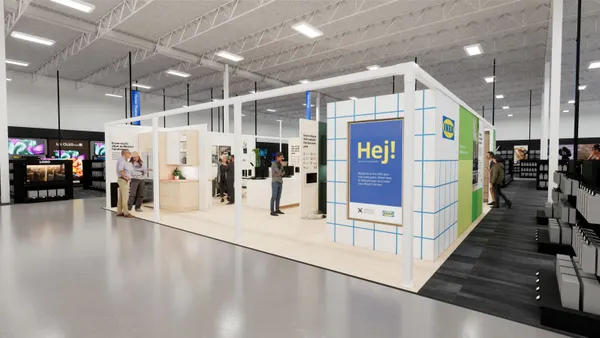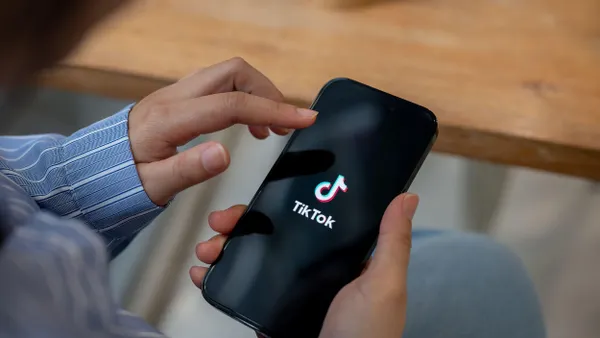Consumers are shifting their shopping online. According to eMarketer, e-commerce sales will make up 21% of worldwide total retail sales this year with US retail e-commerce sales expected to surpass $1 trillion dollars.
As more consumers turn to their devices to purchase, they are expecting more from the online shopping experience. In fact, “93% of consumers expect a digital experience equal to or better than the in-store experience,” according to a recent Relevance Report.
Augmented Reality makes the e-commerce experience feel more like in-store retail as consumers can get up close with the product to help them with their buying decision. AR transforms the e-commerce experience from simply a destination to view products online to an immersive experience where users interact and try products virtually in the real world. Using the smartphone camera, AR brings a physicality to e-commerce by giving consumers opportunities to place and interact with a digital replica of the product in their physical space. This enables brands to provide consumers with an extremely personal and intimate online shopping experience that aims to boost buyer confidence, increase conversions and reduce return rates.
Furthermore, AR-enabled product experiences collapse the purchasing funnel into a singular experience. Consumers who engage with AR commerce find themselves falling through all stages of the traditional funnel, from awareness and interest to consideration and purchase, as AR folds together the benefits of online shopping with those from offline shopping experience into one. With web-based augmented reality (WebAR), this can all be achieved in the browser with no app required and easily integrated as part of an existing e-commerce site.
Brands are already using Web AR to transform the online shopping experience for their customers. Leading online art gallery, Saatchi Art, launched a web-based augmented reality feature called “View in a Room,” letting customers view over 1 million works of art in their home before buying online. Mobile site visitors can select the “View in a Room” augmented reality feature to place art on walls in their own physical space before buying it online. According to Saatchi Art, consumers who purchased art using the “View in My Room” WebAR feature spent on average ~17% more than those that purchased without the use of WebAR. In addition, they found that consumers who used the WebAR feature as part of their purchasing journey were four times more likely to convert than those that did not.
This first-of-its-kind production grade deployment developed by AR design firm, Rock Paper Reality, was designed and architected for scalability across the entire site. Each art piece is dynamically scaled based on the artwork’s metadata and deployed into AR on a 3D canvas with the approximate real-world dimensions of the physical artwork. This integrated solution was made possible with the use of Niantic’s 8th Wall platform which offers a complete set of tools to create web-based augmented reality. A similar try-out WebAR feature was subsequently launched on Minted and Society6, the latter in partnership with Sherwin-Williams. Both experiences allowed customers to view the products in their environment before purchasing.

Leading personal audio company, JLab, is also using 8th Wall technology to enable customers to virtually try on audio products directly from the website to help them with their buying decision. Developed by creative agency Scarlet Social, customers can see themselves wearing a variety of styles and products, including wireless earbuds and headsets, before they add it to their cart. Customers access the WebAR try-on experience by going directly to the “Fitting Room” page on JLab.com or by tapping on the “Try-On Virtually” buttons found on the product details page of select audio products. Once triggered, they see themselves wearing virtual replicas of earbuds and headsets using either a smartphone or computer web camera. They can then take a picture to compare how they look in various products before they make a purchase.

More and more brands are relying on augmented reality to transform their existing e-commerce sites into powerful AR commerce destinations. As consumers continue to shift their purchasing behaviors digitally, AR is ready to transform these e-commerce experiences into an effective tool for retailers and consumers alike. The 8th Wall platform is uniquely positioned to transform existing e-commerce sites into powerful AR commerce destinations. Online retailers can use 8th Wall to embed AR and 3D directly onto their site, display virtual objects true-to-size, add customization and hot spots and integrate existing systems and APIs in the AR experience.










